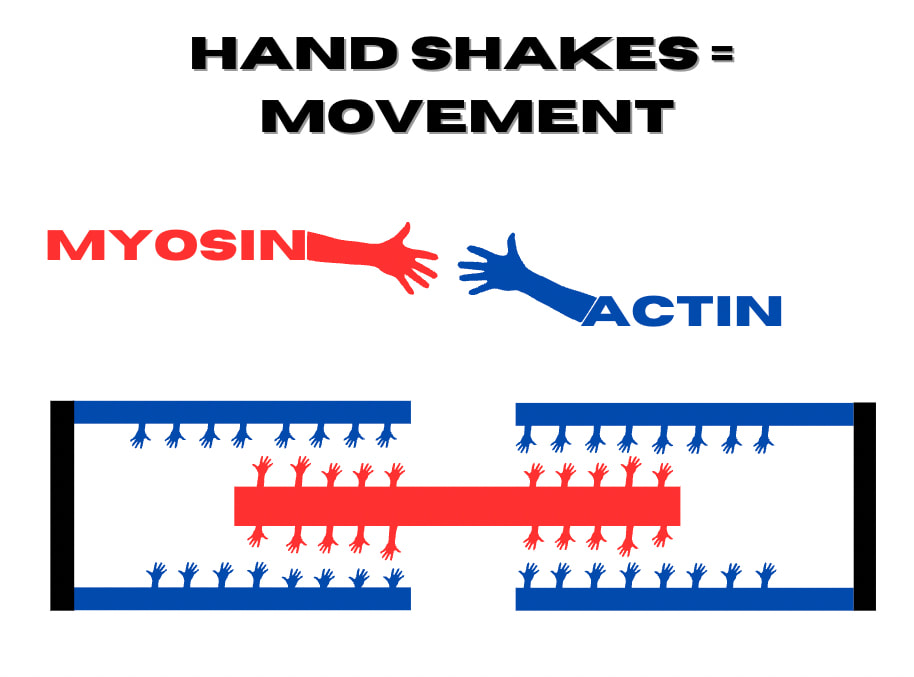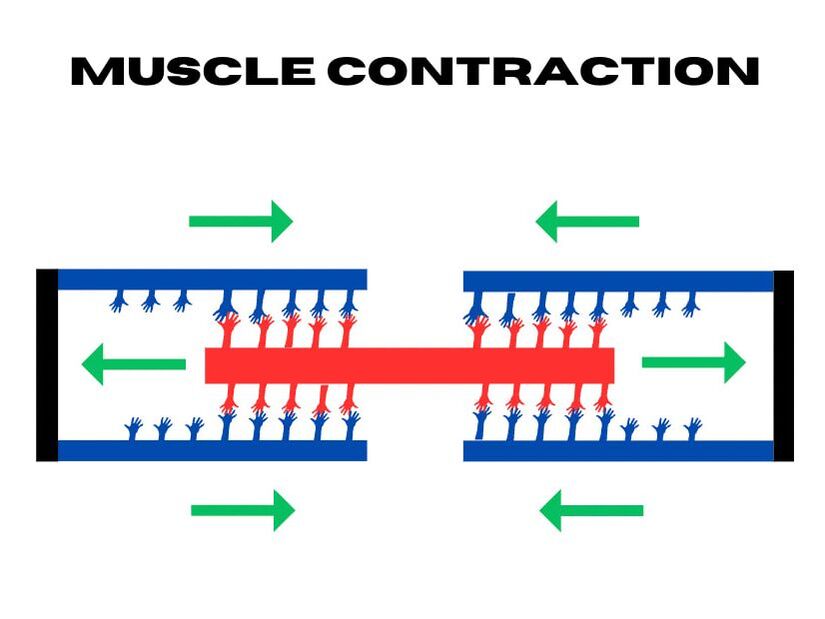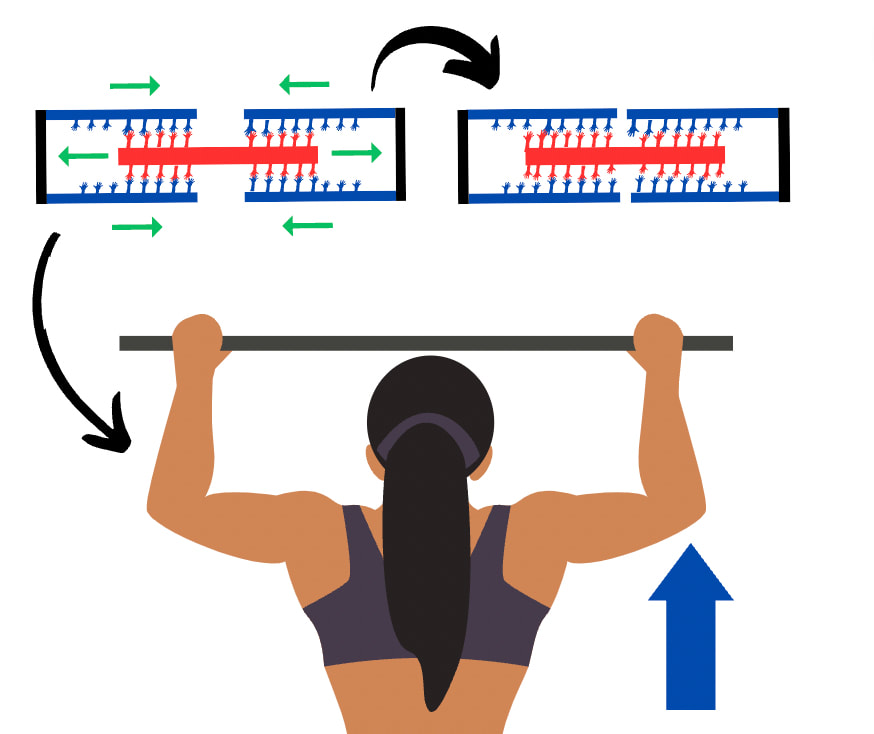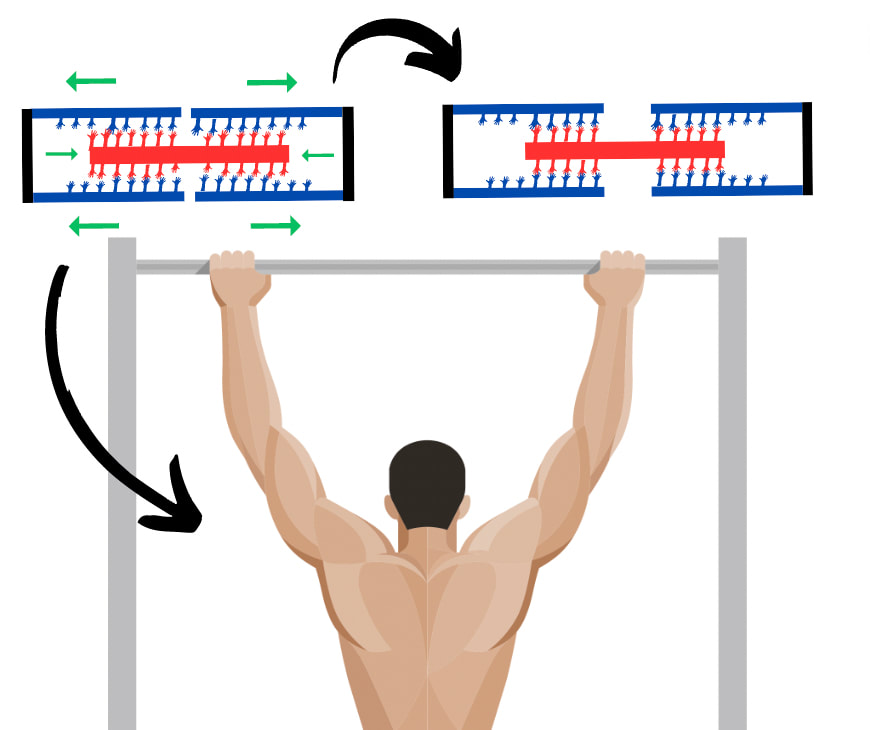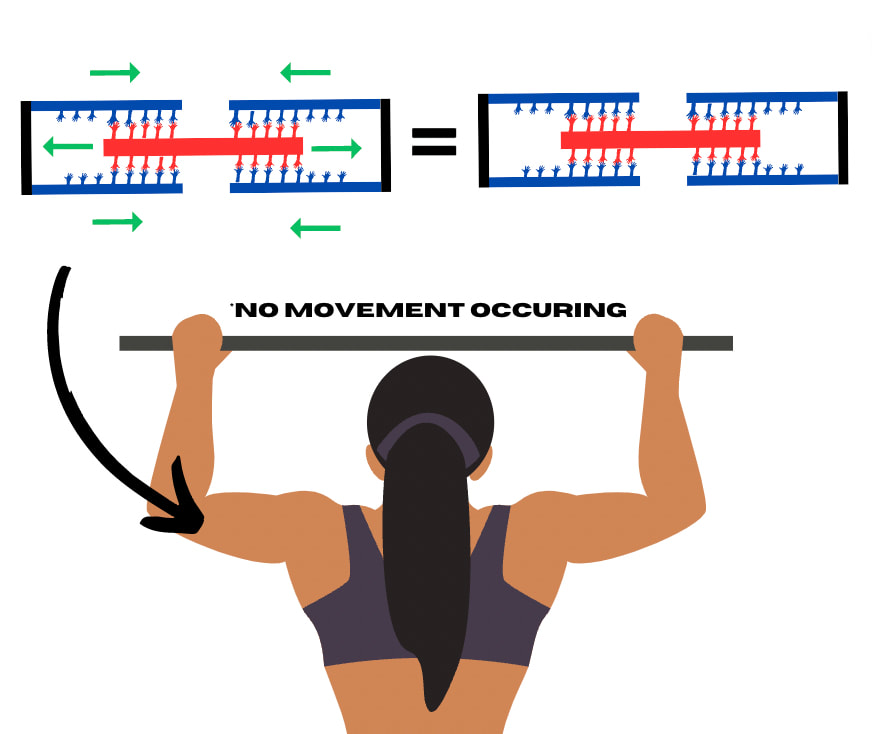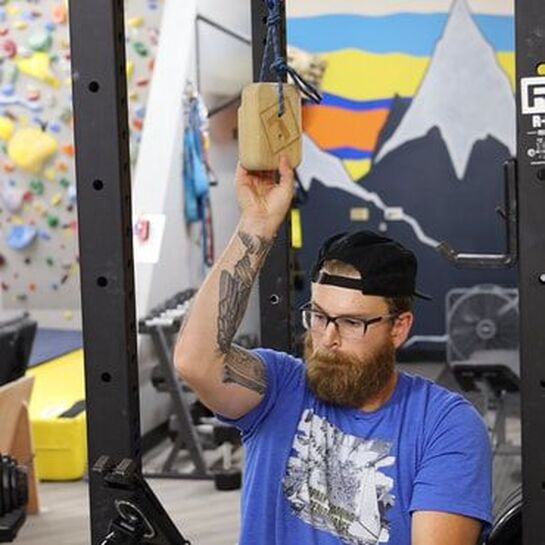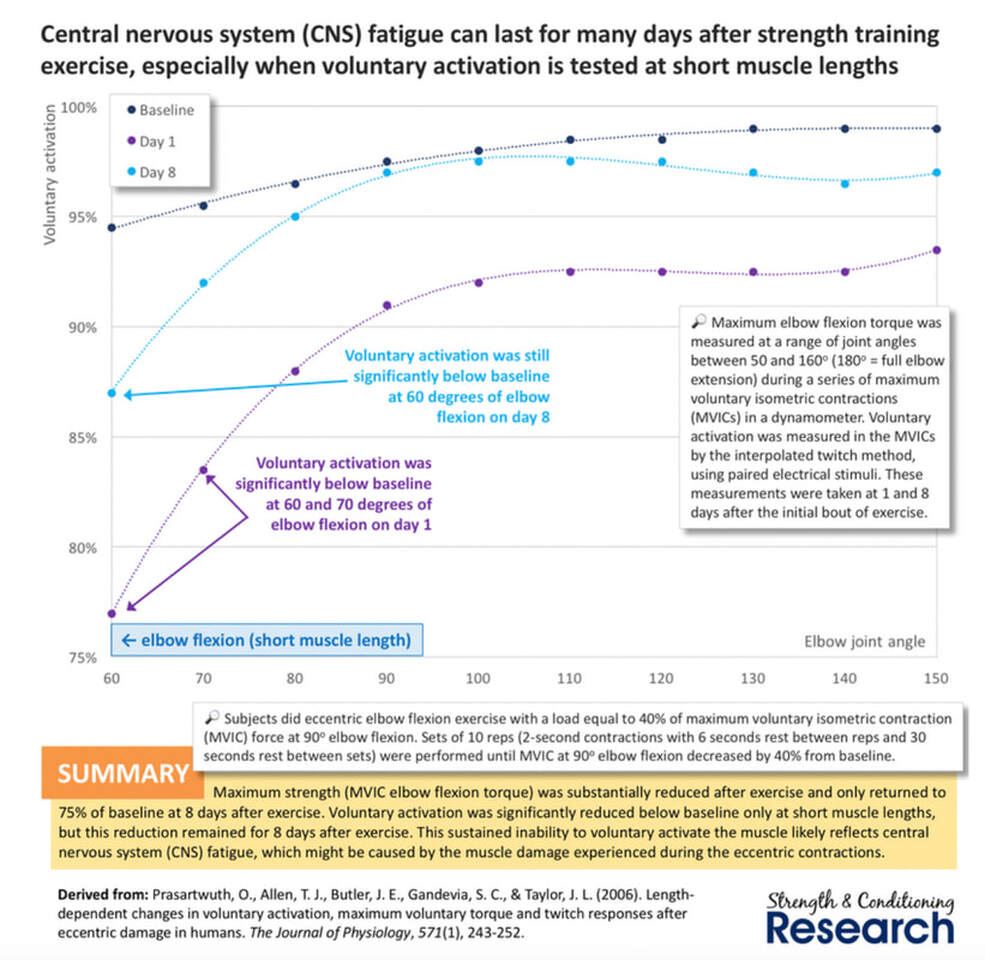Have you ever gone to the climbing gym to cram in as much training as possible to "get your money's worth?" Well, that might actually be hurting your progress rather than helping you become a stronger climber.
Climbing more IS the answer to improving our skills as a climber. However, it is also possible to climb and train too much and experience diminishing returns. This potentially increases your risk for injury and sets up your subsequent climbing sessions for low quality efforts. That’s not a great recipe for getting better.
The secret to climbing stronger is understanding what a quality climbing session looks like and what inhibits that quality.
One of the most common factors reducing the quality of climbing training sessions is the mismanagement of fatigue. Fatigue is the reduction in your ability to climb, lift, jump, etc. It is the reduction in our body’s ability to produce force (strength/endurance) or contract our muscles quickly (power).
The mechanisms inside our muscle that create movement become susceptible to dysfunction over the duration of climbing and training. Knowing how this process works and why they become susceptible will allow us to make better decisions in the climbing gym to keep our quality of work high.
The next section of this article is a quick tutorial to familiarize yourself with how our muscles work and how fatigue happens. This is helpful to understand as you design your own workout plans. If you are the type of person who is really into the whys and hows of physiology, I include a section called "Even More Physiology" at the very end.
Climbing more IS the answer to improving our skills as a climber. However, it is also possible to climb and train too much and experience diminishing returns. This potentially increases your risk for injury and sets up your subsequent climbing sessions for low quality efforts. That’s not a great recipe for getting better.
The secret to climbing stronger is understanding what a quality climbing session looks like and what inhibits that quality.
One of the most common factors reducing the quality of climbing training sessions is the mismanagement of fatigue. Fatigue is the reduction in your ability to climb, lift, jump, etc. It is the reduction in our body’s ability to produce force (strength/endurance) or contract our muscles quickly (power).
The mechanisms inside our muscle that create movement become susceptible to dysfunction over the duration of climbing and training. Knowing how this process works and why they become susceptible will allow us to make better decisions in the climbing gym to keep our quality of work high.
The next section of this article is a quick tutorial to familiarize yourself with how our muscles work and how fatigue happens. This is helpful to understand as you design your own workout plans. If you are the type of person who is really into the whys and hows of physiology, I include a section called "Even More Physiology" at the very end.
|
|
How We Move
Muscular contraction is the activation and shortening of the muscle. A signal gets sent from the brain to the muscle telling it when, how quickly, and how much of the muscle needs to work. Consciously moving your way up a climb is your voluntary activation of this central motor command to send signals to your arms and legs to engage with the wall.
This signal reaches down to components of muscle that will interact with each other and “pull” on each other. These components (Actin and Myosin) must "shake hands" and connect to work on each other and produce muscular contraction and climbing movement.
This signal reaches down to components of muscle that will interact with each other and “pull” on each other. These components (Actin and Myosin) must "shake hands" and connect to work on each other and produce muscular contraction and climbing movement.
Muscle contraction occurs in three ways: concentrically, eccentrically, and isometrically. These are important to know because one of these types of muscle contractions is not as helpful to us for building strength and, if overdone, can more rapidly add to our fatigue and possibly increase injury risk.
ConcentricConcentric muscle contraction is when the muscle attempts to shorten bringing bones closer to each other. This can be visualized in the motion as someone does a pull-up and brings their body closer to the bar.
|
EccentricEccentric muscle contraction is when the muscle is working but the overall movement is muscle stretch and bones are moving away from each other. This is the phase of the pull-up when the individual is lowering themselves back to the ground.
|
IsometricAn isometric contraction is when the muscle is working but no movement is occurring. Imagine someone doing half a pull-up and holding themselves at the halfway point. The individual is working to hold themselves there but no movement is occurring.
|
We fatigue when something along the way, from the signal to the handshakes within our muscles, becomes dysfunctional. The signal can weaken when we are tired.
There are steps in-between the signal and the handshakes that can get disrupted. And there are byproducts and “excess waste" (calcium ions and lactic acid) that can accumulate in our muscles inhibiting their ability to work well and that can leave you feeling sore and uncapable of working hard.
There are steps in-between the signal and the handshakes that can get disrupted. And there are byproducts and “excess waste" (calcium ions and lactic acid) that can accumulate in our muscles inhibiting their ability to work well and that can leave you feeling sore and uncapable of working hard.
Muscle Contraction Type
Muscle damage is greatly influenced by the buildup of calcium ions in the muscle. This buildup of ions signals the release of enzymes that begin to degrade the muscle and take time to recover. Calcium ion accumulation actually increases when muscle stretch while under action occurs (remember the stretching of muscles during a workout is eccentric muscle contractions - i.e. the lowering stage of the pull-up). The stretching of the muscle while under action releases more ions (through stretch induced calcium ion channels) and allows easier access into the muscle. Thus, eccentric muscle contractions - also called the "negative" portion of an exercise - enhance muscle damage compared to concentric or isometric actions. This is shown in the literature when comparing muscle damage across contraction types.
One example of when climbers use “negative” eccentric contractions is downclimbing. Downclimbing is essentially a series of “negative” pull-ups on the wall. Downclimbing is an essential skill to work through certain sequences on the wall or to descend a route or boulder safely. However, when used to extend shorter routes into endurance circuits on the wall, downclimbing can quickly become a potent fatigue producer in our bodies that could take days to properly recover from.
Another example of "negative" eccentric contractions is slowly moving through the range of motion of an exercise to control the movement better. In the pullup example a climber may adhere to a “3 seconds up and 3 seconds down” protocol accentuating both the concentric (upwards) and eccentric (downwards) sections.
Some may use the eccentric portion of an exercise to make progress on the concentric version. This is popular with one arm pull-up training. The climber would use a setup to position themselves at the top of the pull-up (assisted by a step or band) and then lower slowly to the ground to assist themselves back up to the top. However, research shows that eccentric training does not significantly translate to the concentric portion of the exercise (reference &). Thus, this method of one arm pull-up training is not very useful.
An unavoidable eccentric in climbing is found in climbing itself. Hanging on by our fingertips is “eccentric-like." The fingers undergo stretch at the micro level and display strength characteristics like “traditional” eccentric exercises like the lowering of a pullup.
This strength characteristics are the fact that under the eccentric contraction force production is approximately1.2-1.5 times greater than that of the concentric ability! A climber doing a single pull up at body weight could theoretically lower themselves down under control with 1.2-1.5 times their bodyweight added on to them, depending on their training history. This ability comes from structures inside the muscle that act as rubber bands that add force passively when called upon. It doesn’t come purely from the muscle.
This is also seen when we test the fingers with a force gauge and compare our finger’s ability to “hang on” when we test in an overhead position vs. the finger’s ability to pull in isolation. Often there is a huge gap, which lends supportive evidence that the fingers may behave eccentric-like. This is further supported observing some climber’s ability to perform max hangs with insanely high amounts of weight added to their bodies or pulled off the ground.
One example of when climbers use “negative” eccentric contractions is downclimbing. Downclimbing is essentially a series of “negative” pull-ups on the wall. Downclimbing is an essential skill to work through certain sequences on the wall or to descend a route or boulder safely. However, when used to extend shorter routes into endurance circuits on the wall, downclimbing can quickly become a potent fatigue producer in our bodies that could take days to properly recover from.
Another example of "negative" eccentric contractions is slowly moving through the range of motion of an exercise to control the movement better. In the pullup example a climber may adhere to a “3 seconds up and 3 seconds down” protocol accentuating both the concentric (upwards) and eccentric (downwards) sections.
Some may use the eccentric portion of an exercise to make progress on the concentric version. This is popular with one arm pull-up training. The climber would use a setup to position themselves at the top of the pull-up (assisted by a step or band) and then lower slowly to the ground to assist themselves back up to the top. However, research shows that eccentric training does not significantly translate to the concentric portion of the exercise (reference &). Thus, this method of one arm pull-up training is not very useful.
An unavoidable eccentric in climbing is found in climbing itself. Hanging on by our fingertips is “eccentric-like." The fingers undergo stretch at the micro level and display strength characteristics like “traditional” eccentric exercises like the lowering of a pullup.
This strength characteristics are the fact that under the eccentric contraction force production is approximately1.2-1.5 times greater than that of the concentric ability! A climber doing a single pull up at body weight could theoretically lower themselves down under control with 1.2-1.5 times their bodyweight added on to them, depending on their training history. This ability comes from structures inside the muscle that act as rubber bands that add force passively when called upon. It doesn’t come purely from the muscle.
This is also seen when we test the fingers with a force gauge and compare our finger’s ability to “hang on” when we test in an overhead position vs. the finger’s ability to pull in isolation. Often there is a huge gap, which lends supportive evidence that the fingers may behave eccentric-like. This is further supported observing some climber’s ability to perform max hangs with insanely high amounts of weight added to their bodies or pulled off the ground.
|
In this video Collin McGee demonstrates the pull strength difference between "active" (eccentric) pulling with the fingers overhead, passive (concentric) pulling with the fingers from below, and pulling using a full grip bar. The best way to build upper body strength is by using a pull-bar.
|
|
|
Minimizing Fatigue:
Short Term Versus Long-Term Fatigue
Short and long-term fatigue also factor into the effectiveness of our climbing strength training. The goal is to minimize the amount of long-term fatigue.
Short-term fatigue is the fatigue that you experience during an exercise or the duration of your climbing session. It is the accumulation of fatigue mechanisms that cause you to stop the exercise or pack up your gym bag and head home.
Long-term fatigue is any reduction in our ability to move, exercise, or climb that lasts longer than a day. This is typically identified as a loss in strength relative to a baseline collected when you are fully recovered. Exactly how long this fatigue last depends on many factors, but this is the fatigue you want to better understand and minimize when you can. This sustained fatigue can last as long as 8 days! Factors like muscle damage or an inhibited central nervous system play roles in long lasting fatigue.
Short-term fatigue is the fatigue that you experience during an exercise or the duration of your climbing session. It is the accumulation of fatigue mechanisms that cause you to stop the exercise or pack up your gym bag and head home.
Long-term fatigue is any reduction in our ability to move, exercise, or climb that lasts longer than a day. This is typically identified as a loss in strength relative to a baseline collected when you are fully recovered. Exactly how long this fatigue last depends on many factors, but this is the fatigue you want to better understand and minimize when you can. This sustained fatigue can last as long as 8 days! Factors like muscle damage or an inhibited central nervous system play roles in long lasting fatigue.
The most fatiguing factors of exercise are ones that increase muscle damage or those of high volume or duration. Muscle damage doesn’t necessarily mean a breaking down or tearing apart of the muscle. It can also refer to the degradation of smaller components of muscle that have a significant influence on the muscle’s function which need ample recovery time. This opens the door for low intensity exercise to be potent in its fatiguing effect on our bodies.
High volume training is probably the most fatiguing. Climbing is fun - that is why we do it. It is easy to blink an eye and watch 3 hours go by at the climbing gym. But, this is NOT effective training - it is fatiguing training.
Learning how to cut sessions off appropriately keeping your future self in mind can be difficult to do in a social environment or outdoors, especially on climbing trips. Volume fatigue can also come in sneaky ways since the intensity of the training or climbing you are doing does not have to be very high to induce significant fatigue if the volume is very high.
High volume training is probably the most fatiguing. Climbing is fun - that is why we do it. It is easy to blink an eye and watch 3 hours go by at the climbing gym. But, this is NOT effective training - it is fatiguing training.
Learning how to cut sessions off appropriately keeping your future self in mind can be difficult to do in a social environment or outdoors, especially on climbing trips. Volume fatigue can also come in sneaky ways since the intensity of the training or climbing you are doing does not have to be very high to induce significant fatigue if the volume is very high.
Exercise Intensity & Duration
The harder and heavier the exercise the more fatiguing it should be, right? Not exactly.
Heavy lifting, using loads ~80% or more of our maximum capabilities, have relatively low levels of fatigue. That is, if the volume is kept low (i.e. high weight/high difficulty, low reps).
It is shown through the research that lighter loads produce longer lasting fatigue than heavier loads when both are training to failure! (ref. 1). The interesting thing about these studies is that non-exercised parts of the body also showed signs of fatigue (ref. 2). This points towards the type of fatigue accumulated is a) intense and b) directly affects our nervous system (CNS) since a more systematic consequence arises after the low load training.
You will have difficulty “feeling” CNS fatigue. It doesn’t always weigh us down immediately upon waking up. Knowing that CNS fatigue affects non-exercised limbs means you can assess a non-climbing part of your body to see if you are showing signs of this fatigue.
Since most of the intense climbing-based stress is placed on our fingers and upper limbs, testing your legs via jumping would be useful to determine if you are experiencing CNS fatigue. If you do not have access to vertical jump measuring devices, a simple test is to do a campus board vertical slap test. Go to your local gym one day fully rested and jump off of two feet and try to touch the highest rung you can. Record that as your rested baseline. On days you are experiencing CNS fatigue your ability to repeat that baseline high will go down, even if you are feeling “fresh."
This longer lasting fatigue comes from greater muscle damage and greater relative intensity to our nervous system. As previously stated, muscle damage will occur significantly from calcium ion accumulation. Calcium accumulation potential is increased when we use lighter load simply because we can extend the duration of the exercise or session, which allows more time for this accumulation. Exercising with high loads, or at a greater intensity, doesn’t give calcium lots of time to accumulate.
How does this relate to your climbing?
Let’s take the 5.10/6a climber with goals of climbing 5.11+ on approximately 20-30 degree walls.
You warm up and begin to hop on routes at the gym. Climbs that are going to help you progress your skills and fitness as a climber are going to have to fall somewhere in the neighborhood of 5.10. Climbing 5.6 is not going to provide enough challenge or transferable skill sets to push you to past the 5.10 mark.
You get on your 5.10 routes for the day, and you send a few but begin to tire out. At this moment your ability to give enough effort at the intensity level required for positive change towards your 5.10+ goals is gone. This would be the time to end your session.
But it has only been 90 minutes and your friends still want to climb! So, you stick around. You may have to reduce the grade, or angle, to continue climbing. You are dropping the intensity (and the skill specificity) further away from your goals to continue climbing at the gym. You are able to stick around with your friends for another 2 hours before you all call it quits. Although this was fun, it will not add to your strength goals and it increased your long-term fatigue.
I am not saying that climbing with your friends is bad nor that lower grades don’t have value. However, if the paragraph above speaks to you, you might be unknowingly (until now!) be racking up a bunch of low intensity, “non-beneficial” fatigue that is inhibiting you from your progressive strength goals!
Heavy lifting, using loads ~80% or more of our maximum capabilities, have relatively low levels of fatigue. That is, if the volume is kept low (i.e. high weight/high difficulty, low reps).
It is shown through the research that lighter loads produce longer lasting fatigue than heavier loads when both are training to failure! (ref. 1). The interesting thing about these studies is that non-exercised parts of the body also showed signs of fatigue (ref. 2). This points towards the type of fatigue accumulated is a) intense and b) directly affects our nervous system (CNS) since a more systematic consequence arises after the low load training.
You will have difficulty “feeling” CNS fatigue. It doesn’t always weigh us down immediately upon waking up. Knowing that CNS fatigue affects non-exercised limbs means you can assess a non-climbing part of your body to see if you are showing signs of this fatigue.
Since most of the intense climbing-based stress is placed on our fingers and upper limbs, testing your legs via jumping would be useful to determine if you are experiencing CNS fatigue. If you do not have access to vertical jump measuring devices, a simple test is to do a campus board vertical slap test. Go to your local gym one day fully rested and jump off of two feet and try to touch the highest rung you can. Record that as your rested baseline. On days you are experiencing CNS fatigue your ability to repeat that baseline high will go down, even if you are feeling “fresh."
This longer lasting fatigue comes from greater muscle damage and greater relative intensity to our nervous system. As previously stated, muscle damage will occur significantly from calcium ion accumulation. Calcium accumulation potential is increased when we use lighter load simply because we can extend the duration of the exercise or session, which allows more time for this accumulation. Exercising with high loads, or at a greater intensity, doesn’t give calcium lots of time to accumulate.
How does this relate to your climbing?
Let’s take the 5.10/6a climber with goals of climbing 5.11+ on approximately 20-30 degree walls.
You warm up and begin to hop on routes at the gym. Climbs that are going to help you progress your skills and fitness as a climber are going to have to fall somewhere in the neighborhood of 5.10. Climbing 5.6 is not going to provide enough challenge or transferable skill sets to push you to past the 5.10 mark.
You get on your 5.10 routes for the day, and you send a few but begin to tire out. At this moment your ability to give enough effort at the intensity level required for positive change towards your 5.10+ goals is gone. This would be the time to end your session.
But it has only been 90 minutes and your friends still want to climb! So, you stick around. You may have to reduce the grade, or angle, to continue climbing. You are dropping the intensity (and the skill specificity) further away from your goals to continue climbing at the gym. You are able to stick around with your friends for another 2 hours before you all call it quits. Although this was fun, it will not add to your strength goals and it increased your long-term fatigue.
I am not saying that climbing with your friends is bad nor that lower grades don’t have value. However, if the paragraph above speaks to you, you might be unknowingly (until now!) be racking up a bunch of low intensity, “non-beneficial” fatigue that is inhibiting you from your progressive strength goals!
|
|
Recommendations
- Become more aware of the contraction type that you are using with your body. Although unavoidable, and needed at times, eccentric and eccentric-like contractions are the most fatiguing and muscle damaging.
- Down climb if the sequence requires it or if you are safely coming off a boulder. If you are training endurance circuits on a wall and need to extend the route add in more traversing than downclimbing. When you reach the top of the training boulder drop off if it is safe to do, or downclimb on a few jugs to make the drop safer. If climbing indoors on bigger walls utilize auto belays or have your belay partner bring you down safely and quickly so you can hop right back on the wall for the continuation of your endurance climb.
- Heavy and accentuated eccentric reps of an exercise should be approached as an advanced progression and the volume should be kept low (1-2 sets of ~3-5 reps). The rest should be long (2-5 minutes) and the days of recovery afterwards should be planned out long as well (2-4 days off).
- Max hangs should be treated the same as the previous bullet point. Use them sparingly and respect that they are incredibly taxing to the body. And for some climbers advancing in their training and experience levels, max hangs may become less useful to that demographic over time.
- Have a plan going to the gym for climbing or training. Having a goal in mind will give you a better idea of the intensity of climbing and will direct your efforts better.
- There is a time and place for easier, sustained climbing for all experience levels. Know that it comes at a cost! The lower the intensity and longer sessions mean you will need more recovery time before you can come back to the gym and expect a quality session.
- Short and intense sessions are easy to recover from! Only got 30 minutes to climb or train? Chances are you can work pretty hard during a session like that and the time limit will allow you to spend less time recovering. Be sure to include time to warm up.
- Eccentric and eccentric-like contractions impose the most muscle damage potential. Climbing on your fingers for extended durations almost certainly shifts the exercise to the eccentric side of the spectrum. And exercises like “negatives” and down climbing should be used only as necessary or in very small doses in your training calendar.
Climbing development is a long game. It takes a long time for your body to adapt to the incredibly unique demands of climbing. And it takes a lifetime to close the gap between you and mastery of the sport. Shaping your environment and engaging in the sport in ways that promote longevity will make you a better, and healthier, climber. Not every climber needs to have an outdoor project or grade they want to achieve. Sometimes all we want to do is engage in this beautiful physically and mentally challenging sport we all love and want to share, experience, and create memories with. Whether it is climbing 5.12, or having fun with your friends at the gym, managing fatigue and putting your best foot forward to not wreck your body every time your climb is the answer you seek.
Even More Physiology - Perception of Effort: Why We Stop Moving
It is commonplace to believe that you stop an exercise or a movement because the muscles lose the ability to give the necessary effort, or force, to overcome the weight or task. The reality is you more than likely stop short of that moment. The brain shuts down our efforts - even though we could theoretically keep going - due to reaching your maximal tolerable perception of effort of the movement.
You often have enough force left in our muscles to continue past the moment you do fail, but as the perception of effort increases the strength of our signal to move, the central motor command, goes down. If the central motor command signal is too low, it cannot call on enough muscle to get the job done and thus movement failure occurs. This also means that if we can train in ways that reduce our perception of effort, our body will allow us to work harder!
Reaching your maximal tolerable perception of effort is the likely culprit for causing exercise and movement failure. How we reach that maximum differs depending on the types of fatigue that occur as the result of different muscle contraction types, intensities, and durations in which we move. The different fatigues also come with unique consequences which will influence our subsequent climbing sessions. These consequences can be short-term or long-term.
You often have enough force left in our muscles to continue past the moment you do fail, but as the perception of effort increases the strength of our signal to move, the central motor command, goes down. If the central motor command signal is too low, it cannot call on enough muscle to get the job done and thus movement failure occurs. This also means that if we can train in ways that reduce our perception of effort, our body will allow us to work harder!
Reaching your maximal tolerable perception of effort is the likely culprit for causing exercise and movement failure. How we reach that maximum differs depending on the types of fatigue that occur as the result of different muscle contraction types, intensities, and durations in which we move. The different fatigues also come with unique consequences which will influence our subsequent climbing sessions. These consequences can be short-term or long-term.
Muscle Damage
Muscle damage is a collective term when any structures inside the muscle become degraded or dysfunctional. Degraded components inside the muscles cannot take that signal from the brain and execute muscular contraction well. The signal can also get disrupted and slowed down on its way to the section where the handshakes are initiated. Muscle damage is like a highway that has many potholes making travel difficult. Sure, cars can still pass through but once the road is repaired and smooth again, travel will be much more enjoyable!
Muscular damage isn’t necessarily the breaking or bruising of our muscles. It can also come in the form of small disruptions in the parts and pieces of our muscles and muscular process of movement. This often stems from excess calcium ion build up in the muscle after exercise.
Calcium ions are essential for muscular contraction and movement. They attach to the muscle and allow the handshake process to occur. However, simultaneously calcium build-up will may build up in the muscle as well if it cannot get removed fast enough. This build-up signals for the release of proteases (enzymes) which “eat away” at parts and pieces inside the muscle leading to reduced muscle signal effectiveness and muscle damage.
Muscular damage isn’t necessarily the breaking or bruising of our muscles. It can also come in the form of small disruptions in the parts and pieces of our muscles and muscular process of movement. This often stems from excess calcium ion build up in the muscle after exercise.
Calcium ions are essential for muscular contraction and movement. They attach to the muscle and allow the handshake process to occur. However, simultaneously calcium build-up will may build up in the muscle as well if it cannot get removed fast enough. This build-up signals for the release of proteases (enzymes) which “eat away” at parts and pieces inside the muscle leading to reduced muscle signal effectiveness and muscle damage.
Nervous System
Our central nervous system (CNS) is the sum of our brain and the spinal cord and its ability to send signals throughout our body to create movement. The CNS is a critical component to the quality of our climbing sessions because it controls the amount of effort you can give. If your CNS is fresh, your potential to give high levels of effort is high. This means you can give the necessary effort during exercise and climbing to get stronger. This also means you can give the necessary effort to perform well at harder moves on the wall. High quality effort is ultimately the best way see success at harder moves and sequences, learn them, and improve your climbing abilities.
When your CNS gas tank is running on empty, our capabilities to learn, grow, and get stronger go down. These “high gravity days” create roadblocks along our path to becoming better climbers. They are sneaky as well because you cannot always “feel” CNS fatigue during daily life (CNS fatigue can also be triggered by high stress). Sometimes you can only feel it when you are already at the gym or climbing and things “feel harder than they should." Minimizing CNS fatigue, and thus high gravity days, is how you can show up to training sessions feeling fresher and getting more benefit!
When your CNS gas tank is running on empty, our capabilities to learn, grow, and get stronger go down. These “high gravity days” create roadblocks along our path to becoming better climbers. They are sneaky as well because you cannot always “feel” CNS fatigue during daily life (CNS fatigue can also be triggered by high stress). Sometimes you can only feel it when you are already at the gym or climbing and things “feel harder than they should." Minimizing CNS fatigue, and thus high gravity days, is how you can show up to training sessions feeling fresher and getting more benefit!
|
|
References
(1) Haun, Cody T et al. “Molecular, neuromuscular, and recovery responses to light versus heavy resistance exercise in young men.” Physiological reports vol. 5,18 (2017): e13457. doi:10.14814/phy2.13457
(2) Farrow, Joshua et al. “Lighter-Load Exercise Produces Greater Acute- and Prolonged-Fatigue in Exercised and Non-Exercised Limbs.” Research quarterly for exercise and sport vol. 92,3 (2021): 369-379. doi:10.1080/02701367.2020.1734521
(3) Yoon, Tejin et al. “Mechanisms of fatigue differ after low- and high-force fatiguing contractions in men and women.” Muscle & nerve vol. 36,4 (2007): 515-24. doi:10.1002/mus.20844
(2) Farrow, Joshua et al. “Lighter-Load Exercise Produces Greater Acute- and Prolonged-Fatigue in Exercised and Non-Exercised Limbs.” Research quarterly for exercise and sport vol. 92,3 (2021): 369-379. doi:10.1080/02701367.2020.1734521
(3) Yoon, Tejin et al. “Mechanisms of fatigue differ after low- and high-force fatiguing contractions in men and women.” Muscle & nerve vol. 36,4 (2007): 515-24. doi:10.1002/mus.20844

